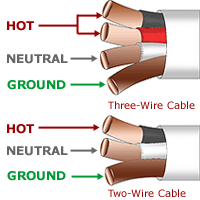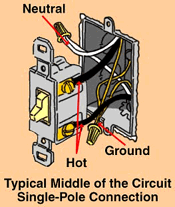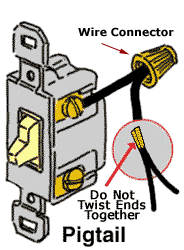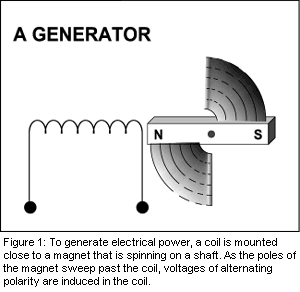Listed - Equipment or materials included in a list published by an organization acceptable to the authority having jurisdiction and concerned with product evaluation, that maintains periodic inspection of production of listed equipment or materials, and whose listing states either that the equipment or material meets appropriate designated standards or has been tested and found suitable for use in specified manner. Location, damp - A location subject to moderate amount of moisture such as some basements, barns, cold storage, warehouse and the like.
Location, dry - A location not normally subject to dampness or wetness: a location classified as dry may be temporarily subject to dampness or wetness, as in case of a building under construction.
Location, wet - A location subject to saturation with water or other liquids.
Megger - A test instrument fpr measuring the insulation resistance of conductors and other electrical equipment; specifically, a megaohm (million ohms) meter; this is a regiestered trade mark of the James Biddle Co.
Megaohm - A unit of electrical resistamce equal to one million ohms.
Megaohmmeter - An instrument for measuring extremely high resistance.
Noninductive Circuit - A circuit in which the magnetic effect of the current flowing has been reduced by one several methods to a minimum or to zero.
Nonlinear Load - A load where the wave shape of the steady state current does not follow the wave shape of the applied voltage.
Ohm - The derived SI unit for electrical resistance or impedance; one ohm equals one volt per am-pere.
Ohmmeter - an instrument for measuring resistance in ohms. Take a look at this diagram to see how an ohmeter is used to check a small control transformer. The ohmmeter's pointer deflection is controlled by the amount of battery current passing through the moving coil. Before measuring the resistance of an unknown resistor or electrical circuit, the ohmmeter must first be calibrated. If the value of resistance to be measured can be estimated within reasonable limits, a range selected that will give approximately half-scale deflection when the resistance is inserted between the probes. If the resistance is unknown, the selector switch is set on the highest scale. Whatever range is selected, the meter must be calibrated to read zero before the unknown resistance is measured.
Overcurrent - Any current in excess of the rated current of equipment or the ampacity of a conductor. It may result from overload, short circuit or ground fault.
Overload - Load greater than the load for which the system or mechanism was intended. A fault, such as a short circuit or ground fault, is not an overload.
Panelboard - A single panel or group of panel units designed for assembly in the form of a single panel: includes buses and may come with or without switches and/or automatic overcurrent protective devices for the control of light, heat, or power circuits of individual as well as aggregate capacity. It is designed to be placed in a cabinet or cutout box that is in or against a wall or partition and is accessible only from the front.
Plenum - Chamber or space forming a part of an air conditioning system
Rainproof - So constructed, projected, or treated as to prevent rain from interfering with the successful operation of the apparatus under specified test conditions.
Raintight - So constructed or protected that exposure to a beating rain will not result in the entrance of water.
Separately Derived System - A premises wiring system whose power is derived from a battery, a solar photovoltaic system, or from a generator, transformer, or converter windings, and that has no direct electrical connection, including solidly connected grounded circuit conductor, to supply conductors originating in another system.
Service Drop - Run of cables from the power company's aerial power lines to the point of connection to a customer's premises.
Service Conductors - The supply conductors that extend from the street main or transformers to the service equipment of the premises being supplied
Service Entrance Conductors - (Overhead) The service conductors between the terminals of the service equipment and a point usually outside the building, clear of building walls, where joined by tap or splice to the service drop.
Service Entrance Conductors - (Underground) The service conductors between the terminals of the service equipment and the point of connection to the service lateral.
Service Equipment - The necessary equipment, usually consisting of a circuit breaker or switch and fuses and their accessories, located near the point entrance of supply conductors to a building and intended to constitute the main control and cutoff means for the supply to the building.
Service Lateral - The underground service conductors between the street main, including any risers at a pole or other structure or from transformers, and the first point of connection to the service-entrance conductors in a terminal box, meter, or other enclosure with adequate space, inside or outside the building wall. Where there is no terminal box, meter, or other enclosure with adequate space, the point of connection is the entrance point of the service conductors into the building.
Service Point - The point of connection between the facilities of the serving utility and the premises wiring.
Switchboard - A large single panel, frame, or assembly of panels having switches, overcurrent, and other protective devices, buses, and usually instruments mounted on the face or back or both. Switchboards are generally accessible from the rear and from the front and are not intended to be installed in cabinets.
Switch, general use - A switch intended for use in general distribution and branch circuits. It is rated in amperes and is capable of interrupting its rated voltage.
Switch, general-use snap - A type of general-use switch so constructed that it can be installed in flush device boxes or on outlet covers, or otherwise used in conjunction with wiring systems recognized by the National Electric Code.
Switch, isolating - A switch intended for isolating an electrical circuit from the source of power. It has no interrupting rating and is intended to be operated only after the circuit has been opened by some other means.
Switch, knife - A switch in which the circuit is closed by a moving blade engaging contact clips.
Switch, motor-circuit - A switch, rated in horsepower, capable of interrupting the maximum operating overload current of a motor of the same horsepower rating as the switch at the rated voltage.
Switch, transfer - A transfer switch is an automatic or nonautomatic device for transferring one or more load conductor connections from one power source to another.
Switch-Leg - That part of a circuit run from a lighting outlet box where a luminaire or lampholder is installed down to an outlet box that contains the wall switch that turns the light or other load on or off: it is a control leg of the branch circuit.
Voltage Drop - The loss of voltage between the input to a device and the output from a device due to the internal impedance or resistance of the device. In all electrical systems, the conductors should be sized so that the voltage drop never exceeds 3% for power, heating, and lighting loads or combinations of these. Furthermore, the maximum total voltage drop for conductors for feeders and branch circuits combined should never exceed 5%.
Watertight - So constructed that water/moisture will not enter the enclosure under specified test conditions.
Weatherproof - So constructed or protected that exposure to the weather will not interfere with successful operation.












 Delicious
Delicious Technorati
Technorati Blogmarks
Blogmarks Digg
Digg Reddit
Reddit Furl
Furl Blinklist
Blinklist Google
Google StumbleUpon
StumbleUpon Windows Live
Windows Live Yahoo
Yahoo Help
Help